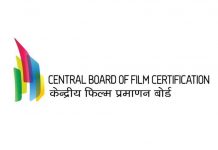This article is written by Yash Kapadia. Through this article, we shall ascertain the steps and provide a guide as to how a film we watch on the big screen is censored by the Central Board of Film Certification of India.
Table of Contents
Introduction
Getting your film cleared by the Central Board of Film Certification of India (CBFC) is a herculean task in today’s times. There have been films that have had unreasonably delayed releases and some that have failed to hit the big screen due to them not being cleared by the CBFC. As we all know, when a film is asked to cut certain scenes, it is public news. When a film is not cleared by the CBFC, it is an entirely new task to overcome.
India is said to have the largest film industry in the world which makes over 1200 feature films1 and above 8000-10,000 short films every year2. At a rough estimate, before we were hit by the COVID-19 pandemic, a total of about 15 million people watched films in India every day, either at its over 13,000 cinema houses or on DVDs or on the cable system or now on OTT streaming platforms. The frenzy of watching a movie is experienced by most of the people living in India. It is not uncommon to sit in a theatre that is houseful.
Coming back to our topic, before we see these movies on the big screen or even on OTT platforms today, film certification has a crucial role to play. It is the CBFC that certifies a film i.e. the CBFC acts as a gateway that provides the green light to any film to be publicly viewed by the audience. However, the process of giving the green light is not a cakewalk. Films require to adhere to certain norms and cut or delete scenes that are against it in order for them to be released. Through this article, we shall understand the role, power of the CBFC and how they censor a film.
What is CBFC and its role
At the outset, one must understand what CBFC is and its role in certifying films in India. The Central Board of Film Certification is a statutory body operating under the Ministry of Information and Broadcasting, regulating the public exhibition of films under the provisions of the Cinematograph Act 1952. Domestic as well as foreign films can be publicly exhibited in India only after being certified by the Central Board of Film Certification.
The film certification process is in compliance with the Cinematograph Act, 1952, (the “Act”) the Cinematograph (Certification) Rules, 1983, and the guidelines issued by the Central Government under Section 5(B) of the Act. The guidelines state that a film shall not be certified for public exhibition if the authority i.e. CBFC, is of the opinion that the film or a particular part of it is against the integrity and sovereignty of our nation, security of the State, friendly relations with foreign States, public order, decency or involves defamation or contempt of court or is likely to incite the commission of any offence.
As per CBFC, the following are its objectives in the exercise of the powers conferred by Section 5B(2) of the Act:
- “The medium of film must remain responsible and sensitive to the values and standards of society;
- Artistic expression and creative freedom are not unduly curbed;
- Certifications are responsible to social changes;
- The medium of film provides clean and healthy entertainment; and
- As far as possible, the film is of aesthetic value and cinematically of a good standard.”
In layman terms, the main function of the CBFC is to determine whether a particular film is fit to be released to the public at large in theatres and now on OTT Platforms too.
How is a film certified
According to Section 5A of the Cinematograph Act, 1952 there are concisely four categories on which a film content is based:
- Universal (U): Open to view to all age groups
- Universal/ Adult (U/A): Open to all age groups but below 12 years require adult supervision
- Adult (A): Open to be viewed only by adults
- Special Class (S): Open to be viewed only by special classes of people like doctors, lawyers, farmers.
Circling back to our question, there are mainly two committees responsible for certifying films, the examining committee and revising committee.
Examining Committee
- A film is referred to the examining committee by one regional officer once an application is received for examination. Every applicant must submit the final copy of the film along with background music and sound effects of the film for examination. The examining committee shall preview the film and in certain cases provide necessary recommendations on the basis of which the film will be certified.
- The regional officer sets the date and place of the examination of the film, at the expense of the applicant.
- The preview, records, and reports of the examination are kept confidential, therefore, the applicant and their representatives are prohibited to be present in the previewing process.
- Disclosing the names of the members of the examining committee is not permitted to maintain confidentiality.
- In addition to Section 5B(1) of the Cinematograph Act, 1952, the CBFC has to abide by a list of other Guidelines whilst examining for certification.
- This examining committee comprises of:
- In the case of a short film, the examining committee consists of one member from the advisory panel, and one examining officer, wherein either of them should be a woman.
- For a long film, the examining committee consists of four members from the advisory panel, and one examining officer, wherein at least two members should be a woman.
- After this examination, the examining committee may allow the applicant to exhibit the film with certain restrictions or unrestricted exhibition or may direct the applicant to incorporate the suggested changes or refuse the exhibition of the entire film.
- Lastly, a report prepared by the examining committee is then sent to the CBFC chief for his final approval.
Revising Committee
- In any case, if the recommendation/s suggested by the examining committee are not found to be reasonable or fair to the applicant, they may request the chairman to send them to what is called the revising committee.
- The revision committee is approached and it engages in its work if the examining committee has refused the certification of a film and in no other case.
- The revising committee comprises
- the chairman; and
- in his/her absence, a board member;
- nine members of the advisory panel/board who are not included in the examining committee, which examined the film.
The quorum for the revising committee consists of four members, where at least two must be women.
- The revising committee examines the film from the very beginning. In fact, the procedures and guidelines of the examining and revising committee are also similar.
- The decision of the majority members is the decision of the revising committee.
- The presiding officer has the casting vote if there is a tie of votes. If the chairman disagrees, then the board shall reexamine or shall send it to another revising committee.
- The decision of the board or revising committee or the board, as the case may be, is final.
How long does it take to certify a film
The process of certifying a film and giving it a green signal for exhibition by the CBFC takes up to 68 days.
- Firstly, the CBFC scrutinizes every application for exhibition, which takes around a week.
- Secondly, the examining committee takes around 15 days and thereafter the chairman takes about 10 days to review the film.
- Ultimately, the relevant information about the suggested cuts/deletions/disclaimers is informed to the applicant. After the said suggestions are incorporated, the CBFC overlooks the process and grants the relevant certification i.e. U, U/A, A or S which may take about 36 days.
Film Certification Appellate Tribunal
The Supreme Court in KA Abbas v Union of India, 1970 provided a list of recommendations that led to the establishment of the Film Certification Appellate Tribunal (FCAT) located in New Delhi through the Cinematograph (Amendment) Act of 1981. The FCAT used to be headed by a retired judge of a high court along with four other members who were appointed by the Centre with a tenure of 3 years.
As per legal provisions, Section 5D of the Act also provided for the establishment of FCAT in order to hear appeals against the decisions of CBFC.
The FCAT had the power to hear appeals from the revising committee within 30 days of passing such an order. An appeal could be made on any of the following orders after due certification is provided by the revising committee:
- Refusal to grant a certificate
- Give an A certificate only
- Give an S certificate only
- Give a UA certificate only
- Directions to make certain changes/ modifications
It is extremely important to note if the applicant was not satisfied, previously the procedure was that they could appeal to the Film Certification Appellate Tribunal (FCAT) and send them the film. However, as of today, the FCAT has been officially abolished.
The abolishment of FCAT
The Government of India under the Tribunal Reforms Ordinance, 2021 and now the Tribunals Reform Act, 2021 abolished the FCAT effective 4th April 2021 which came out of the blue like a lightning bolt for stakeholders in Indian cinema.
It is said that tribunals were not functioning well since their entire administration relied upon a nodal agency i.e. a Ministry under the Government. The tribunal could not fill up vacancies in the judicial department, technical members and the tribunal staff. There were issues concerning the judges of this tribunal as most of them preferred being elevated to the high court and not a tribunal.
It is public knowledge that the CBFC was in news for all the wrong reasons of issuing several cuts to various cuts to films like Udta Punjab, Kya Kool Hain Hum, Bajirao Mastaani, Haider, Kalaakandi. In such scenarios, the FCAT acted as a go-to tribunal for filmmakers to appeal to the excessive number of cuts suggested by the CBFC in order to certify their film for exhibition. The tribunal also acted in a cost-effective and timely manner to resolve disputes. However, it is now officially abolished.
In fact, we need to draw our readers’ attention to the Justice Mukul Mudgal Committee and Shyam Benegal Committee Report wherein significant powers were taken away from the CBFC for making alterations and censoring films. This Report was accepted positively by the film fraternity and also seemed to be the right path to start going ahead with. Also, the Bombay High Court in a matter of the movie Chiriakhana, stated that “You (CBFC) are a certification board and not a censor board”. Considering the power of the President under Article 123 to pass an ordinance, it is necessary that there are circumstances in existence that render it necessary for the President to take immediate measures. There is no concrete reasoning given for this drastic abolishment. In fact, filmmakers have shown their dismay at this abolishment.
Road ahead
Post abolishing of the FCAT, the power of adjudicating the disputes relating to CBFC certifications is now in the hands of the respective state high courts. This means nothing but unreasonable delays in closing disputes which the FCAT may do in an even lesser time. One must understand that there are more than 4.5 million pending cases spread across various areas of law, some urgent and some very urgent. Listing the matters on board and arguing them on an urgent basis is a task. This abolishment has only increased the caseload of the judges of our high courts to entertain CBFC related matters.
It is further unreasonable to even expect the Hon’ble high courts to expedite these matters at the speed of FCAT which is a special tribunal formed for entertaining only CBFC related disputes. Along with all that is stated above, the filmmakers, especially the producers will have a race against time in resolving these disputes while they keep burning their money on a daily basis due to delays in their film release.
Filmmakers will now retract from filing court proceedings in fear of losing money and in all probability look to come to an amicable settlement with the CBFC or adhere to all changes suggested by the board. This does not look like a sustainable method especially in the eyes of this sector of industry and we should expect provisions to be adopted by the Government very soon.
Conclusion
The CBFC frequently abuses its censoring power by snipping out all of the film’s main and effective elements. This not only detracts from the film’s inventiveness, but it also shows a lack of respect for the filmmaker’s, actors’, and the whole crew behind the film’s efforts, devotion, and hard work over many years. It would also be a breach of the Right to Freedom of Speech under Article 19(1)(a) of the Constitution. The Board’s casual attitude, combined with needless cutbacks, is inappropriate and may be seen as an attempt to make a mockery of the whole film industry.
In drawing things to a close, we have understood the process of how a film is certified by the CBFC and also updated ourselves with the recent abolishment of FCAT which acted as the court that especially hears CBFC related issues. We as viewers have now adapted to watching movies and web series on OTT platforms which are governed by a different set of laws, unlike the movies we see in theatres. Only time will tell whether a more friendly and open-minded approach is used by CBFC to certify films considering the 21st century Millennial and Gen-Z audience.
References
- https://www.statista.com/statistics/1263342/india-number-of-film-releases-by-language/
- https://stephenfollows.com/how-many-short-films-are-made-each-year/
- https://www.thehindu.com/entertainment/movies/abolition-of-film-certification-appellate-tribunal-leaves-film-industry-puzzled-anxious/article34288969.ece
- https://www.cine-tales.com/movies-maximum-cuts-censor-board/
- https://indianexpress.com/article/explained/how-films-are-certified-why-it-causes-dispute-cbfc-bombay-high-court-5834845/
- https://www.livemint.com/industry/media/filmmakers-dismayed-as-government-abolishes-fcat-11617782694254.html
Students of Lawsikho courses regularly produce writing assignments and work on practical exercises as a part of their coursework and develop themselves in real-life practical skills.
LawSikho has created a telegram group for exchanging legal knowledge, referrals, and various opportunities. You can click on this link and join:
https://t.me/joinchat/L9vr7LmS9pJjYTQ9
Follow us on Instagram and subscribe to our YouTube channel for more amazing legal content.












